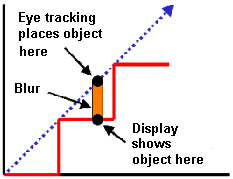So one day I was browsing computer resolution articles on wikipedia. I was curious to see if any desktop monitors supported resolutions past 2560x1600. This lead me to stumble upon the IBM T221 monitor.
It came out in 2001-2002 and was discontinued in 2005. Supports 3840x2400 on a 22.2" screen! Holy crap! The only pitfall, 1) 48Hz is the fastest refresh rate supported at that resolution, and 2) needs special adapters to properly use today's current DVI cables and not the proprietary solution that needs a ratty old Matrox card.
The only pitfall, 1) 48Hz is the fastest refresh rate supported at that resolution, and 2) needs special adapters to properly use today's current DVI cables and not the proprietary solution that needs a ratty old Matrox card.
The thing is, there is a guy on ebay that sells these adapters bundled with the monitors. These monitors usually go for in the $1500+ range... but for a crazy 0.1245 pixel pitch.. that's basically half that of most monitors!
Not too sure how well contrast, color gamut, etc work with these decade old monitors, but they're still impressive.
My question to you [H]... what is your opinion/thoughts on all of this? Personally the 48hz kind of kills it for me because I'd prefer more fps while I play games, and while I like resolution, the pixel pitch on this might be just a bit too fine for me. But still, it's an interesting find and amazing something like this could be pumped out so long ago.
It came out in 2001-2002 and was discontinued in 2005. Supports 3840x2400 on a 22.2" screen! Holy crap!
The thing is, there is a guy on ebay that sells these adapters bundled with the monitors. These monitors usually go for in the $1500+ range... but for a crazy 0.1245 pixel pitch.. that's basically half that of most monitors!
Not too sure how well contrast, color gamut, etc work with these decade old monitors, but they're still impressive.
My question to you [H]... what is your opinion/thoughts on all of this? Personally the 48hz kind of kills it for me because I'd prefer more fps while I play games, and while I like resolution, the pixel pitch on this might be just a bit too fine for me. But still, it's an interesting find and amazing something like this could be pumped out so long ago.
![[H]ard|Forum](/styles/hardforum/xenforo/logo_dark.png)


